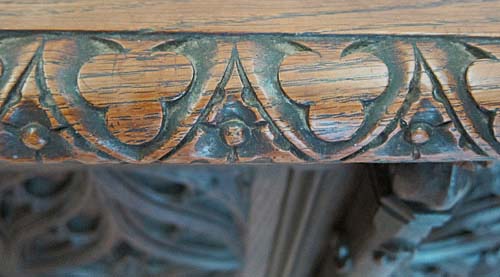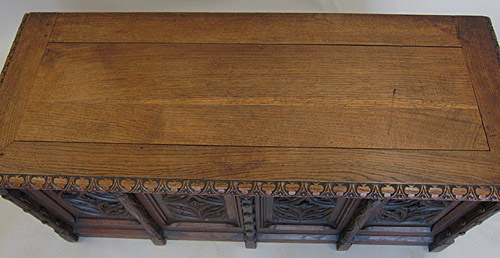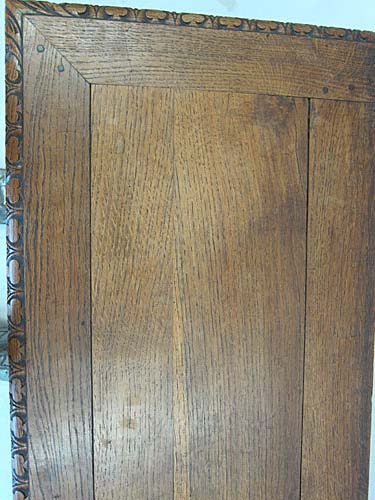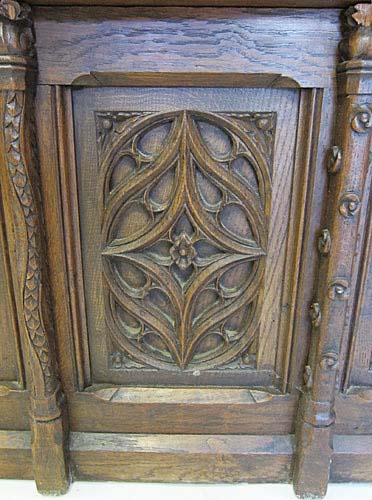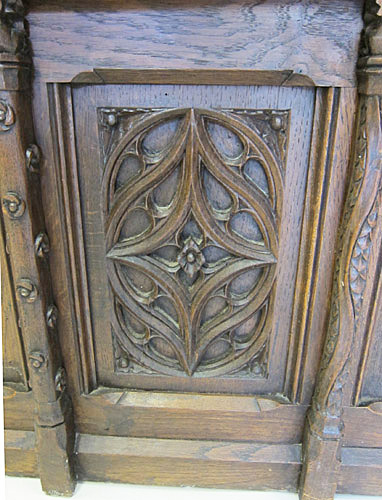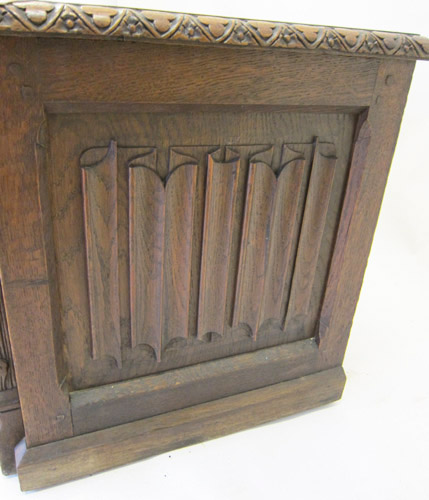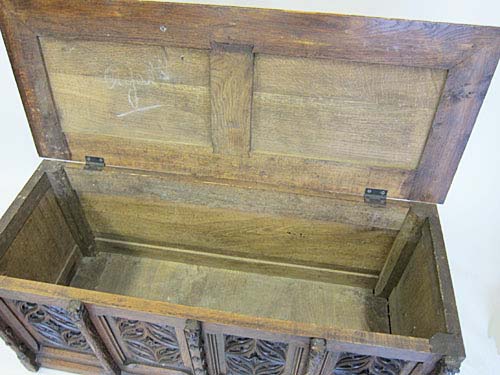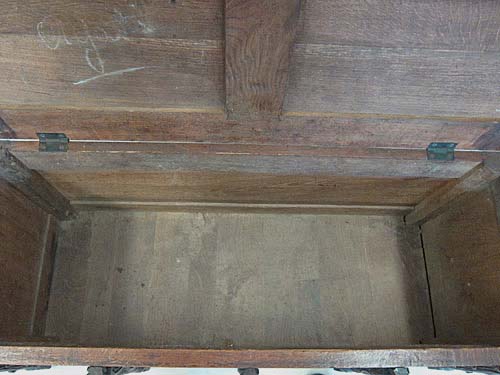
This chest is a refreshing example of adoption of the Gothic style for items in everyday use. While chests (or trunks) were the very first category of furniture, developed by early Europeans to safeguard possessions in a portable container, they have proved enduring and useful down the centuries although losing their handles in the 19th century when portability was no longer a priority.
In this example we see the sturdiness of its French heritage in being made of solid oak. The elaborate tracery or fenestrage celebrates its design origins dating back to medieval times when such patterns were found in architecture and in decorative items such as benches (developed from chests by adding a back).
Unlike most of the Gothic style chests we have had, the four panels of tracery on the front of this chest are identical. However, they still invite scrutiny and reward the viewer who admires them in detail. Based on a tall, elliptical shape, the outline of the tracery encases a four-pointed design whose eight arms form the frame of smaller mouchettes (elliptical shapes, each filled with two lobes). Unlike most examples of tracery on chests, there is no top or bottom to these designs. If one were to draw a horizontal line through the central flower and fold the design in half along it, the two halves would be identical. The main design of each half is the graceful “S” curve or ogive, characteristic of designs during the “Flamboyant Gothic” of the late Middle Ages in Northern France.
Particularly interesting are the pilasters separating the panels and the virtuosic carving they involve. Dividing the two panels at the center is a pilaster sporting carved crocketing of a type seen more commonly on Gothic spires. Between the two outermost panels are pilasters with a vertical, wavy pattern of overlapping leaves evoking the stylized three-lobed plant (or possibly a fleur-de-lys) bordering the lid of the chest.
Marking this chest as one that was likely a commission or destined for a specific location, the end-pieces are carved (unlike mass-produced furniture where the sides were typically blank). Intricate linen-fold patterns have been carved and enhance the Gothic feeling of this piece.
Overall, this chest has a lovely patina in a lightish oak hue with the top somewhat lighter (perhaps due to ultraviolet). While there are several marks on the top, as shown in the photos below, they add character to a piece that is old but well-preserved.
The most representative color, given the challenges of photographing dark furniture, is in the image at the top of this page.
Reference
Ader-Tajan, Collection Bruno Perrier Haute Epoque (Catalog for Sale at Auction on April 6, 1992 at the Hôtel Drouot, Paris); Boccador, Jacqueline, Le Mobilier Français du Moyen Age à la Renaissance (Editions d'Art Monelle Hayot, Saint-Just-en-Chaussée, 1988); Charles, Corinne, Visions d'Intérieurs, du Meuble au Décor (Paris-Musées, Paris, 2003); Thirion, Jacques, Le Mobilier du Moyen Age et de la Renaissance en France (Editions Faton, Dijon, 1998).
Uses
This chest would be ideal at the foot of a bed or in an entryway between two Gothic chairs such as 4118 or 5188.
